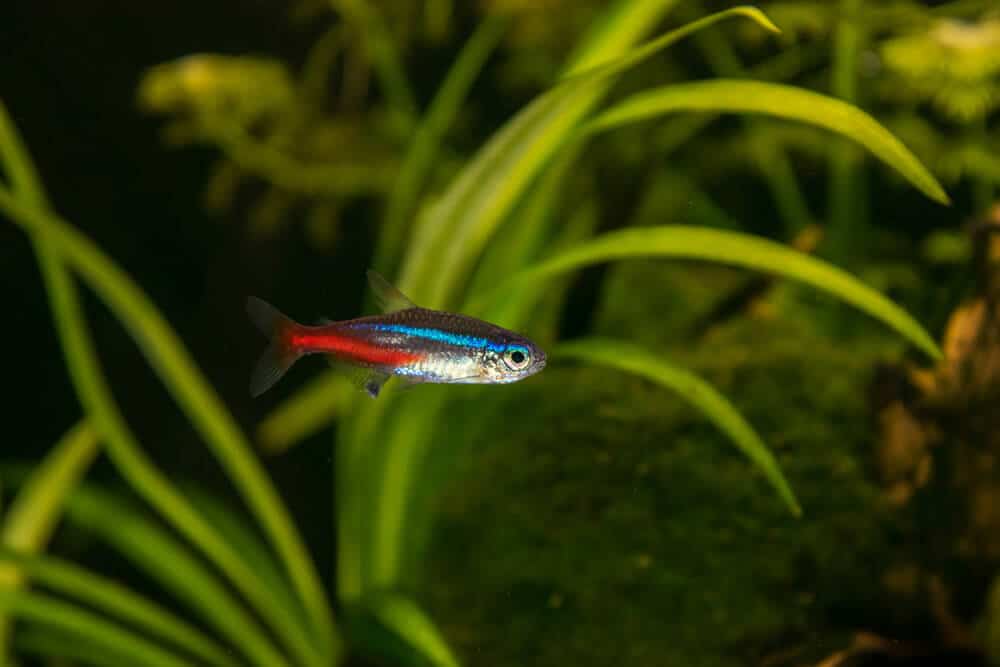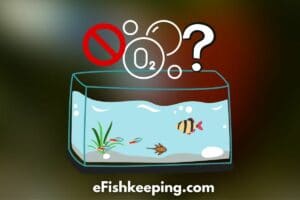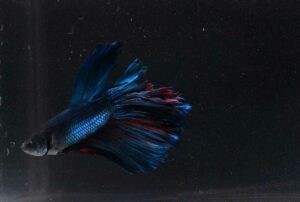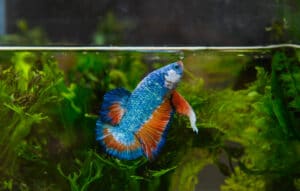Neon Tetras are those vibrant, eye-catching little fish that can really brighten up any tank. But do they die easily? Let’s find out!
Well, Neon tetras are a delicate fish species and are prone to dying easily if their water quality is not maintained correctly. While they can typically live up to two years in a well-maintained home aquarium, several factors can contribute to their early demise, such as stress, poor water conditions, and genetics.
In this article, you’ll learn the common reasons for Neon Tetra deaths, how to identify if your fish is in trouble, and tips to keep them healthy and prevent them from dying early.
Plus, I’ll even suggest some alternative fish choices if you’re considering a different addition to your tank. So make sure to read till the end and let’s jump right in!
Common Reasons For Neon Tetra Deaths
| Reason | Explanation |
| Poor Water Quality | Neon Tetras are sensitive to changes in water parameters. High ammonia, nitrite, or nitrate levels can stress and ultimately kill your fish. |
| Incorrect Water Temperature | Neon Tetras prefer water of around 72-80°F (22-27°C). Drastic temperature changes or consistently low temperatures can lead to stress and death. |
| Stress | An overcrowded tank, aggressive tank mates, or inadequate hiding places can lead to stressed Neon Tetras, making them more susceptible to illness and death. Also, not keeping them with more fish of their own kind can also cause stress because they are inherently schooling fish. |
| Disease | Neon Tetras can be prone to certain diseases, such as Neon Tetra Disease or Ich. These can be fatal if left untreated. |
| Poor Diet | Feeding your Neon Tetras low-quality food or not providing a varied diet can weaken their immune systems and lead to a shorter lifespan |
| Genetics | Some Neon Tetras may be genetically weaker or have certain health issues, making them more susceptible to diseases or premature death. |
The truth is, Neon Tetras can be a bit delicate, but with proper care, they can thrive in your aquarium.
How To Know If Your Neon Tetra Is In Trouble?

- Loss of color
- Lethargy and reduced activity
- Loss of appetite
- Irregular and odd swimming patterns
- Prone to hiding
- Physical abnormalities
Neon Tetras Died Suddenly – Within Hours or 1 Day: Here’s Why
Neon tetras are one of the most popular aquarium fish due to their striking colors and active personalities. However, it can be disheartening to see them die suddenly after bringing them home from the pet store.
If you find yourself in this situation, don’t worry, as there are many reasons why neon tetras might die within hours or a day of being introduced to a new environment.
Reason 1: Neon Tetra Couldn’t Adjust With The New Tank Conditions
One of the most common reasons for neon tetras to die suddenly is that they cannot tolerate the new environment they have been placed in.
These fish are highly sensitive to changes in water parameters, and even small differences in temperature, pH, or other parameters can be stressful and potentially fatal.
SOLUTION:
To prevent this, it’s important to acclimate your neon tetra properly before introducing them to their new home.
Acclimatization involves gradually adjusting the fish to the temperature, pH, and other parameters of the water in their new tank. To do this, float the bag with the fish in the aquarium for about 15 minutes to allow the water inside the bag to match the water temperature in the aquarium.
Then, slowly add some of the aquarium water to the bag over the course of an hour, about a quarter of a cup at a time. After an hour, carefully release the fish into the tank.
I highly recommend you to watch this video to learn more about how to acclimate a fish:
Author’s Take: To be honest, even if you follow the acclimatization process, there is still a chance that your neon tetras may not survive.
While researching, I read an anecdotal experience of an aquarist who properly acclimated their neon tetras, but unfortunately, they still died after a few weeks.
So, don’t be disheartened if you’ve already used this method and your neon tetra still passed away. These fish are indeed delicate and require specific care to thrive.
However, it’s still important to do everything you can to give them the best chance at a healthy life. That’s why acclimating them while introducing them to their new tank is a good idea.
Reason 2: You Already Got A Weak Neon Tetra
Another possible reason why your neon tetra may have died suddenly is that you may have purchased a weak or genetically compromised fish. Unfortunately, neon tetras are popular fish and they are often overbred – which can lead to the development of less hardy types of neon tetras.
SOLUTION:
To avoid purchasing a weak or sick fish, it’s important to buy your neon tetras from a trusted source. Do your research and find a reputable pet store or breeder in your locality who specializes in neon tetras.
When inspecting the fish, look for signs of genetic deformities, such as a bent spine or abnormal fin shape. These deformities can indicate underlying health issues and should be avoided. Instead, choose fish that are active, have vibrant colors, and appear to be in good health.
Pro Tip: Another way to ensure you are purchasing healthy fish is to observe them for a few minutes before making your selection. Watch how they swim and interact with their tank mates. If they seem lethargic, disoriented, or show any signs of illness, it’s best to choose a different fish.
Reason 3: You Introduced Neon Tetras In An Uncycled Tank
If your neon tetras died within a few days after you got them, chances are – you had introduced them into an uncycled tank. This is a common mistake that can happen especially as a beginner aquarium hobbyist. But don’t worry, I have got you covered.
First things first, it’s essential to know about the cycling process of a fish tank. Cycling a tank is the process of establishing beneficial bacteria in your aquarium’s filter media and substrate.
These bacteria help break down harmful ammonia and nitrite, which are produced by fish waste, uneaten food, and decaying organic matter. Without these bacteria, these toxins can build up in the water and harm your fish.
The whole cycling of a tank typically takes as less as two weeks and at maximum it can take up to a month or two.
Now here’s the thing:
If you introduce fish into an uncycled tank, there may not be enough beneficial bacteria to handle the amount of waste produced by the fish. This can lead to a rapid increase in ammonia and nitrite levels, which can quickly become toxic to your fish, leading to stress and potential death.
SOLUTION:
To avoid this, it’s important to cycle your tank before adding any fish. This process can take anywhere from a few weeks to a few months as discussed, depending on the size of your tank and the type of filter you are using.
You can cycle your tank by adding a source of ammonia, such as fish food or pure ammonia, and allowing the bacteria to grow and establish themselves in your filter media and substrate.
It’s important to monitor your water parameters during the cycling process, using a test kit to check for ammonia, nitrite, and nitrate levels. Once your tank is fully cycled, your water parameters should be stable, with nitrite and ammonia levels close to zero and with some nitrate level in the tank.
Reason 4: Using Untreated Tap Water
A neon tetra can also die with the usage of untreated tap water in the aquarium. Tap water often contains chlorine, chloramine, heavy metals, and other harmful chemicals that can be toxic to fish. Even if the tap water in your area is safe for human consumption, it may not be suitable for your fish.
SOLUTION:
To prevent harm to your neon tetras, it’s important to treat your tap water with a water conditioner or dechlorinator before adding it to the aquarium. These products neutralize the harmful chemicals in tap water and make it safe for your fish to live in.

If you’re looking for one of the best and reliable water conditioners, then I highly recommend checking out Seachem Prime (available on Amazon).
Seachem Prime is an effective solution for removing harmful chemicals such as chlorine and chloramine from water. It can also detoxify heavy metals, as well as ammonia, nitrites, and nitrates.
For further reference, read my detailed article about Seachem Prime dosage.
It’s also essential to test the water regularly to ensure that the water parameters are suitable for your neon tetras.
And in addition to using a water conditioner and monitoring water parameters, it’s also important to perform regular water changes. This helps to remove any buildup of harmful chemicals or waste products in the aquarium.
Reason 5: Being Attacked By Incompatible Tank Mates
Another potential reason why your neon tetras may have died suddenly is due to incompatible tank mates. Certain fish species can be aggressive or territorial, which can lead to attacks on smaller and more docile fish like neon tetras.
SOLUTION:
Before adding neon tetras to your aquarium, it’s important to research and choose compatible tank mates that won’t harm them. Some good options include other small, peaceful fish such as guppies, platies, and corydoras. Avoid adding aggressive or territorial fish, such as cichlids or bettas, that may see neon tetras as food or competition.
If you suspect that your neon tetras were attacked by other fish in the aquarium, it’s important to remove them immediately to prevent further harm. Observe the remaining fish closely and monitor for any signs of stress or injury. Provide hiding places and plenty of plants to create a sense of security for the fish.
Remember that neon tetras are schooling fish – which means they feel more secured and do best when they are kept in groups with other similar neon tetras. As a rule of thumb, have at least 6 neon tetras in the tank. But you can also have up to 10 to 15 neon tetras if the tank size permits.
Preventing Neon Tetras From Dying Early – Tips To Keep Them Healthy & Happy
Neon Tetras are not only beautiful but also quite lively and fun to watch. However, they can be a bit sensitive, and ensuring their well-being takes a bit of effort.
But don’t worry, I’m here to help you out with some tips to keep them healthy and prevent them from dying early.
1. Water Quality:
First and foremost, you need to maintain pristine water conditions for your neon tetras. They’re native to soft, acidic water in South America, so you’ll want to replicate those conditions in your tank.
Keep the pH between 6.0 and 7.0, and make sure the water hardness stays within the range of 2-10 dGH. And of course, ammonia, nitrite, and nitrate levels should be as close to zero as possible. Regular water changes, proper filtration, and testing are key to maintaining water quality.
2. Tank Size and Setup:
Neon tetras love to swim around and explore, so it’s best to provide them with at least a 10-gallon tank.
They’re schooling fish, which means they feel more secure when they’re in a group. A minimum of six neon tetras is recommended, but more is always better. Decorate the tank with plants, driftwood, and rocks to create hiding spots and make them feel at home.
3. Temperature:
These little guys are sensitive to temperature fluctuations. Maintain a steady water temperature between 72°F and 80°F (22°C and 27°C). A good-quality aquarium heater and a thermometer are essential to ensure consistent temperatures.
4. Diet:
A balanced diet is crucial for keeping your neon tetras healthy and vibrant. Feed them a mix of high-quality flakes, micro pellets, and frozen or live foods like daphnia, brine shrimp, or bloodworms.
Providing a varied diet ensures they receive all the necessary nutrients, which can help prevent diseases and boost their immune system.
5. Avoid Stress:
Like any other living creature, neon tetras can get stressed, and this can lead to a weakened immune system and even early death.
To minimize stress, maintain stable water parameters, avoid overcrowding, and introduce tank mates that are peaceful and compatible with neon tetras. Additionally, try to limit sudden changes in their environment.
6. Disease Prevention:
Keep an eye out for any signs of illness, like lethargy, loss of appetite, or changes in color or appearance. Early detection and treatment are essential for preventing the spread of disease to other fish in the tank.
Quarantine new fish before adding them to the main tank to reduce the risk of introducing pathogens.
7. Regular Maintenance:
Consistent tank maintenance is vital for your neon tetras’ well-being. Perform regular water changes (about 10% per week) and clean the substrate, filter, and decorations as needed. This will help prevent the buildup of waste and harmful chemicals that can lead to poor water quality.
Common Neon Tetra Diseases You Need To Be Aware Of
| Disease Name | Description |
| Ich | Commonly known as white spot disease, it is caused by a parasite that results in white spots all over the body of the neon tetra. The spots are usually small and appear like grains of salt, and the fish may show signs of scratching or rubbing against objects due to itching. If left untreated, the disease can be fatal. |
| Columnaris | Also known as cotton mouth disease or mouth fungus, columnaris is a bacterial infection that causes a whitish-grayish film to develop on the body of the neon tetra, particularly on the mouth, fins, and gills. It can also cause ulcers, skin lesions, and erosion of the fins. |
| Fin Rot | This bacterial infection causes the fins of the neon tetra to become frayed or tattered, and can also cause the fins to shrink or even fall off. The infected fins may also become discolored and develop a whitish or opaque appearance. |
| Neon Tetra Disease (NTD) | This viral infection is specific to neon tetras and can be fatal. It is characterized by a loss of color and appetite, and a curved or bent spine. |
| Velvet Disease | Velvet disease is caused by a parasitic protozoan that appears as a yellowish or grayish velvet-like coating on the body of the neon tetra. The fish may also become lethargic and lose appetite. |
| Dropsy | Dropsy is characterized by a swollen abdomen and bloating, and the scales of the neon tetra may appear raised and pinecone-like. The fish may also become lethargic and lose appetite. |
| Swim Bladder Disorder | This condition affects the swim bladder, causing the neon tetra to have difficulty swimming and maintain its balance. The fish may swim on its side, upside down, or float to the surface or bottom of the tank. It can be caused by a variety of factors, including bacterial infections, constipation, and improper feeding habits. |
Neon tetras are susceptible to various diseases and health issues, including bacterial and viral infections, parasitic infestations, and swim bladder disorders.
These diseases can cause a range of symptoms, such as white spots, ulcers, fin rot, loss of color, and swollen abdomen, among others.
Proper aquarium maintenance, regular water changes, and a balanced diet can help prevent these diseases from occurring. Early detection and treatment are crucial to prevent the spread of the disease and save the neon tetra’s life.
Top 3 Alternative Fish Choices That Are More Hardy
| Fish | Community Fish | Peaceful | Description |
| 1. Zebra Danios | Yes | Yes | Zebra Danios are small, active fish that are very hardy and easy to care for. They farewell-known for their streamlined body, and active nature in the tank. |
| 2. Guppies | Yes | Yes | Guppies are small, peaceful fish that are very hardy and easy to care for. They are known for their bright colors and flashy tails, and they prefer to swim in schools. They are good community fish and can be kept with other peaceful species. |
| 3. Cherry Barbs | Yes | Yes | Cherry Barbs are small, colorful fish that are hardy and peaceful. They come in a variety of colors, but the most common is the bright red cherry color. Cherry barbs are specifically known in the hobby for being hardy and immune to diseases which makes them a great choice as a hardy alternative to neon tetras. |
Related Read: How Many Guppies And Neon Tetras Should Be Kept Together?
Conclusion
To sum up, the sudden death of neon tetras can be a devastating experience, but it’s often preventable with proper care and attention. By ensuring suitable water conditions, acclimating your fish properly, reducing stress, and monitoring for signs of illness, you can help ensure a long and healthy life for your neon tetras.
Hi! I’m Praveen Ghoshal, the founder of eFishkeeping.com. Inspired by my Dad, I got interested in fishkeeping when I was a kid. Since then, I have been involved with this hobby. Currently, I have 3 fish tanks at our home, and I enjoy this hobby with my full family. Read more about me here.







